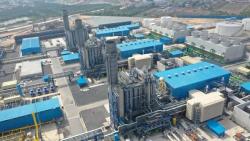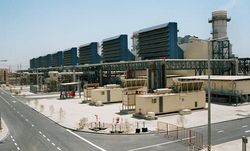
OR WAIT null SECS
© 2024 MJH Life Sciences™ and Turbomachinery Magazine. All rights reserved.
Hot corrosion: Mechanism for rapid degradation
The main corrosion mechanism that rapidly degrades hot components in gas turbines is called “hot corrosion”. It is produced by salts which melt on the surface of the components and rapidly corrode the coating and base material. Hot corrosion can be divided in two types of attacks.
This has excerpts from a paper, “Lifetime of gas turbine hot section parts in an oil and gas environment” by Bernard Quoix, France Amélie Pesquet Pablo Bellocq of TOTAL E&P Pau, France, at the 2018 Turbomachinery Symposium.
Type 1: It is mainly observed between ~800 and 950°C, and it is initiated by the condensation of alkali metal salts such as sodium and potassium sulphate (Na2SO4 and K2SO4) on the hot components. These liquid salts react with the oxide film or coating of the component until reaching the substrate and deplete its superficial chromium content. After the chromium content is reduced, the oxidation of the base metal is accelerated and a fragile porous scale is formed.
Typically hot corrosion is observed in two stages: Initiation: Degradation of the coating or protective oxide layer. In this stage, the base material is not compromised.
· Oxidation of base material with penetration: Once the liquid salts reach the base metal, the penetration of the attack is commonly very localized and deepens quickly.
In the less aggressive forms of hot corrosion, the initiation can be, approximately, ten times longer than the oxidation of the base material until the catastrophic failure. However, if the content of sodium chloride (NaCl) is high enough, an eutectic of NaCl and Na2SO4 can be achieved with a melting points as low as ~600°C which results in a much more severe attack with very short initiation time.
Similarly, in presence of vanadium (V, found in liquid fuels), the initiation can be extremely fast due to the low temperatures of formation of vanadium liquid phases (~500°C) and the fact that together with the Na2SO4 , the solubility of the oxide layer is highly increased.
Type 2: It is mainly observed between ~600 and 800°C. It is also produced by the condensation of Na2SO4 and K2SO4, but in this case, the products of the corrosion, of the coating or base material (CoSO4 and NiSO4), further increase the corrosion by creating eutectics with the alkali metal salts (E.g.: Na2SO4 - CoSO4 or Na2SO4 - NiSO4). Melting temperatures of these eutectics could be as low as ~500°C. This process requires higher partial pressure of SO3 in the gaseous phase than for Type-1 corrosion and is therefore observed in cases of higher Sulphur content in the air or fuel gas. Type-2 corrosion is typically faster than Type-1 since the products of the oxidation themselves reduce the melting point of the alkali salts facilitating their condensation and therefore further corrosion. Consequently Type-2 corrosion has almost no initiation period and often looks more localized and pitting is observed as soon as the phenomenon is initiated.
Three relevant characteristics of hot corrosion are highlighted below: In the temperature operating range of hot components, hot corrosion can be up to ten times faster than oxidation due to the fact that the corrosion reaction is faster in liquid phases than in gaseous phases. Type-1 is also called high temperature hot corrosion, and Type-2 is also called low temperature hot corrosion. However, as it was mentioned before, Type-1 hot corrosion can develop at lower temperatures than some forms of Type-2 in case of high presence of sodium chloride and vanadium. Low temperature Type-1 and Type-2 hot corrosion may damage the components at a faster rate. Consequently, lower temperatures (lower operating regime) does not always imply lower hot corrosion. As it was highlighted in the previous paragraphs, hot corrosion requires the presence of sulphates and alkalis such as sodium and potassium.
Sulphates are typically formed at high temperatures in the combustion chamber from: hydrogen sulphide (H2S) present in the fuel gas or sulfur dioxide (SO2) in the air
· sodium or potassium typically present in the fuel and in marine or industrial environments.
· Consequently, turbines running with sour fuel gas, and operating in marine environments or in industrial areas with the required chemicals in the air, are prone to suffer from this type of corrosion.



